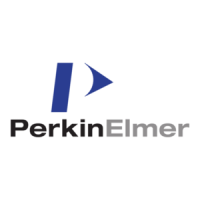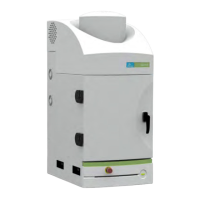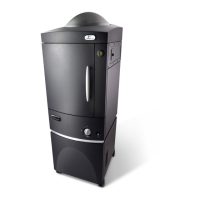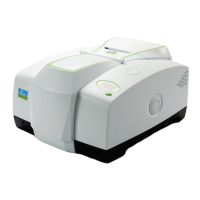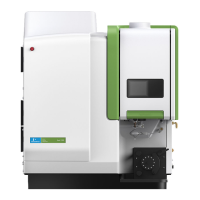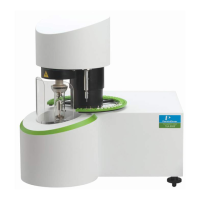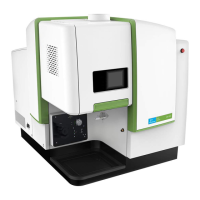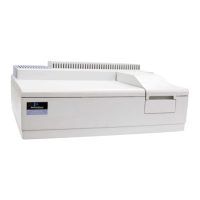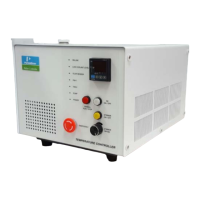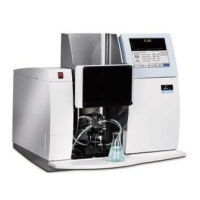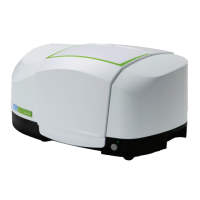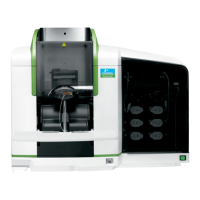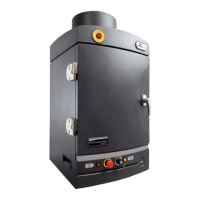
Do you have a question about the PerkinElmer IVIS Lumina XRMS III Series and is the answer not in the manual?
| Imaging Modality | Bioluminescence, Fluorescence, X-ray |
|---|---|
| Wavelength Range | 400-900 nm |
| X-ray Capability | Yes |
| Excitation Filters | Multiple |
| Emission Filters | Multiple |
| Software | Living Image software for acquisition and analysis |
| Animal Capacity | Up to 5 mice or 2 |
| Animal Handling | Integrated anesthesia system, heated stage |
| Spectral Unmixing | Yes |
Provides guidelines on how safety information is presented in the manual and defines hazard symbols.
Explains symbols used in the manual and on the IVIS Lumina XRMS Series III.
Emphasizes reading and understanding all safety and operating instructions for safe use.
Details X-ray safety requirements, surveys, and regulatory compliance for operation.
Outlines environmental requirements such as temperature, humidity, and workspace for optimal system performance.
Provides instructions and warnings regarding cleaning and safe movement of system components.
Covers power source requirements, cord protection, surges, and outages for the IVIS Lumina XRMS Series III.
States that all servicing should be performed by PerkinElmer Technical Support to maintain warranty.
Advises against using equipment not recommended by the manual and warns against modifying the instrument.
Highlights hazards associated with electrical components and warns against user servicing of internal parts.
Warns that the equipment produces X-rays and requires trained personnel for operation.
Warns about intense light causing eye damage and high-temperature lamps causing burns.
Covers safety related to the heavy weight and moving parts of the instrument.
Addresses safety precautions for handling potentially hazardous samples and waste disposal.
Advises against removing panels or modifying shielding without supervision and warns against unauthorized modifications.
Introduces the legal notices section, including warranty and software agreements.
Outlines the terms and conditions of the limited warranty for the system and software.
Lists patents related to the IVIS Imaging System and its components, and licensing requirements.
Lists registered trademarks and copyright information for PerkinElmer products.
Provides disclaimers regarding the use of the software and the system, including warranty voiding.
Introduces the chapter on X-ray safety, including system definition and exposure limits.
Explains the nature of radiation, distinguishing between ionizing and non-ionizing types.
Details how X-rays affect cells and organisms, covering deterministic and stochastic effects.
Describes the built-in safety features designed to protect operators from radiation exposure.
Outlines user responsibilities for operating the system safely and within legal requirements.
Details compliance with US (FDA) and international X-ray regulations and registration requirements.
Provides contact details for PerkinElmer support and lists US state radiation authorities.
Details the features and technical specifications of the scientific-grade CCD camera.
Describes the X-ray modality and its integrated components within the system.
Explains the function and components of the X-ray scintillation module for image conversion.
Details the front panel switches and indicators for controlling the X-ray system.
Explains the role of the key switch in controlling access to the X-ray functionality.
Describes the imaging chamber's features, construction, and safety shielding.
Lists the optical specifications, including lens F/Stop and field of view for different modes.
Describes the excitation and emission filter wheels and their software control.
Details the computer system, software, and peripherals used for data acquisition and analysis.
Specifies the environmental conditions required for the computer and monitor.
Step-by-step guide for powering on and initializing the IVIS Lumina XRMS Series III system.
Instructions for safely restarting the system after a loss of power.
Explains the gas inlet and outlet connections for anesthesia systems.
Details the operation of the imaging chamber door, including safety interlocks and warnings.
Manual procedure for adjusting the scintillation plate for different subject heights.
Covers essential imaging preparation steps like using black paper and centering subjects.
Provides instructions for safely shutting down the entire IVIS Lumina XRMS Series III system.
Introduces the fluorescence module and its capabilities for imaging applications.
Lists the electrical and environmental requirements for installing the fluorescence module.
Details electrical, environmental, lamp, and fuse specifications for the fluorescence module.
Explains the system components and the theory behind fluorescent imaging.
Guides users through the process of acquiring fluorescent images using the IVIS software.
Provides solutions for common hardware problems encountered during fluorescent imaging.
Offers guidance on cleaning and maintaining the fluorescence module and associated equipment.
Outlines the requirements and procedures for performing X-ray leakage safety tests.
Details daily, weekly, and monthly safety checks to ensure proper instrument function.
Provides a list of acceptable cleaning solutions and procedures for the imaging chamber.
Instructions for cleaning the window and holder of the scintillation plate.
Addresses issues where the measured CCD camera temperature differs from the demand temperature.
Explains potential causes and corrective actions for poor quality photographic images.
Discusses factors affecting luminescent image quality and how to resolve issues.
Guides users through diagnosing and resolving issues when no image is generated.
Procedures for safely shutting down the imaging system when configured with the XWS-260.
Instructions and precautions for moving the IVIS system mounted on the XWS-260.
Steps for powering on and initializing the IVIS system on the XWS-260 workstation.
Step-by-step guide for removing the scintillation plate holder for cleaning or replacement.
Instructions for reinstalling the scintillation plate holder after removal.
